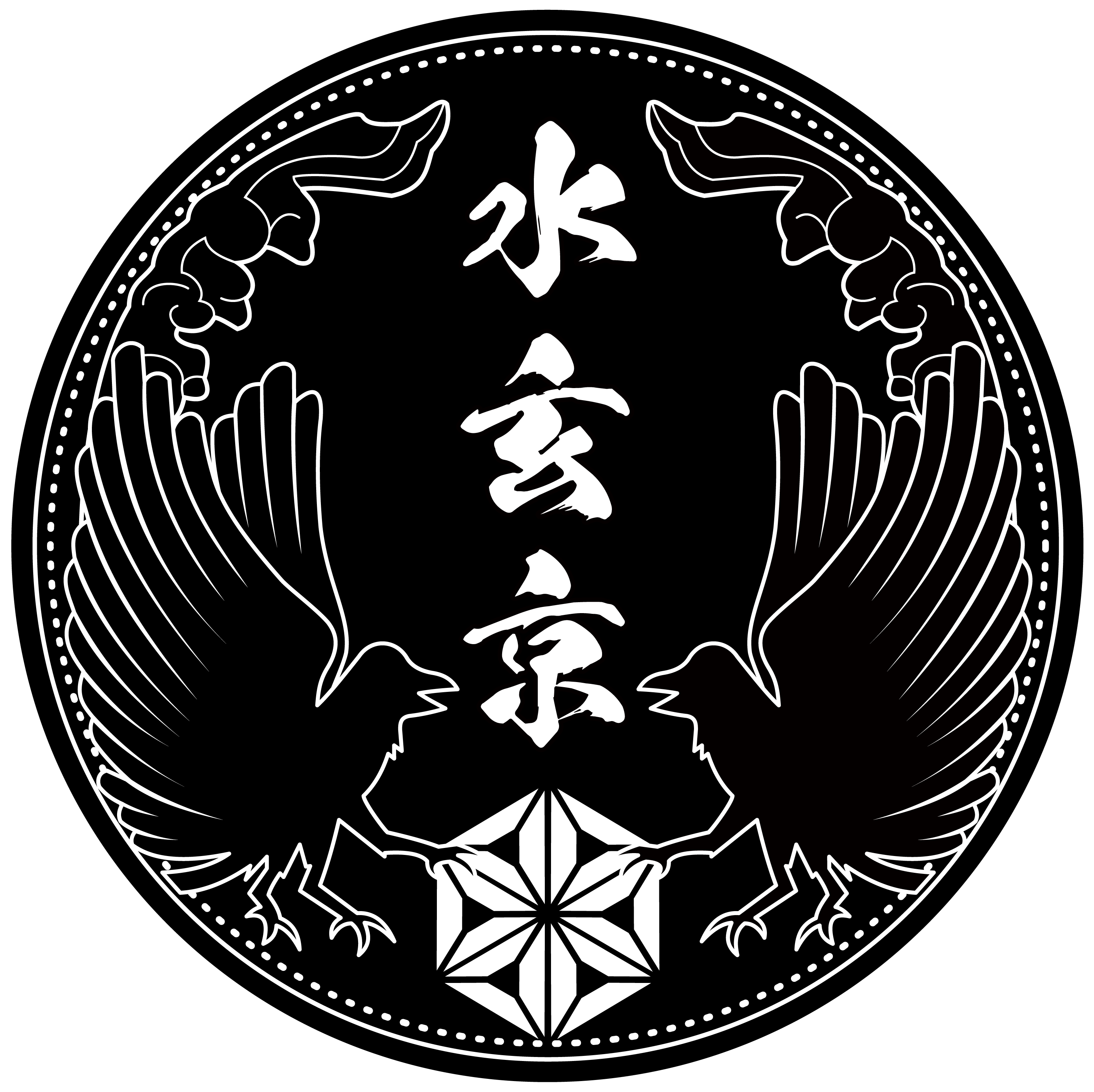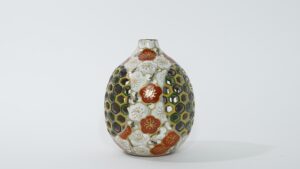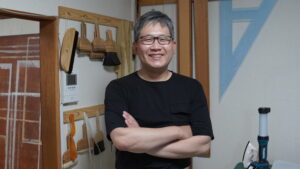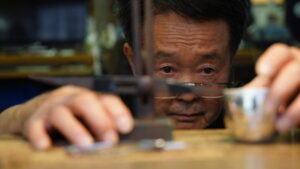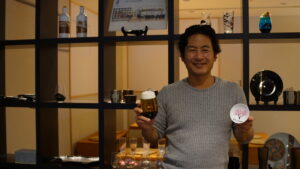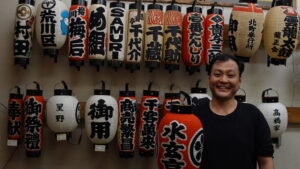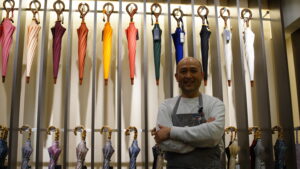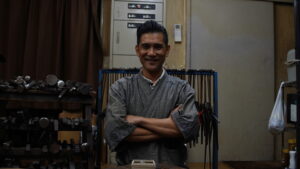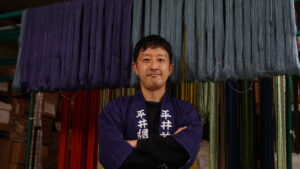Huduru Kogei is a workshop in Kadonooji Hachijo, Kyoto Prefecture, that processes gold leaf used in Kyoto Yuzen. The name “Huduru” is written with the Chinese character “two / 二” and the word for bird, “tsuru / 鶴”. When we asked why they use this name, Akihiro Uenaka, whom we interviewed for this article, answered with a friendly manner. He is a craftsman who decorates kimono with gold leaf at Huduru Kogei. He does’t know the origin of the pronunciation, but Mr. Kaminaka’s parents are from Tsurugaoka / 鶴ケ丘, and he chose the name “Huduru” when he came to the city from there. In this interview, we asked him about his background and vision for the future.
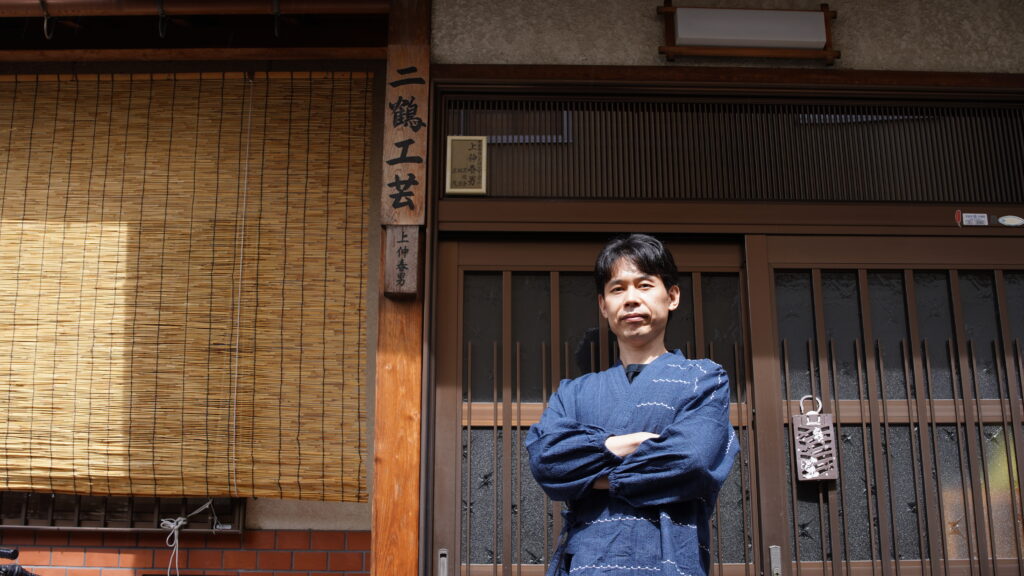
- —What kind of child were you when you were a kid?
-
I think I was a normal child when I was little. I have been loving art and crafts since I was kid. Even though I was good, I don’t think I was the best in my class. There were other kids in my class who were much better than me (laughs). On my days off, I was obsessed with fishing, and I used to make my own wood-carving fishing lures. I just loved making things!
- —Were you involved in any club activities when you were a student?
-
I have been a member of the table tennis club since junior high school and used to play in matches until 2015, but now I enjoy playing with my friends at the local sports club. When I was younger, I didn’t care about muscle soreness, and I didn’t understand what older people used to say, “I’ll have muscle soreness in two days.” Recently, however, I have been feeling what they used to say at the time (laugh). I always get an upset back at least once a year, and I feel my body is weakened. I can no longer do chiquita, a technique that I used in the past few years, with a frozen shoulder. The reason why I retired from playing table tennis is because I broke my shoulder.
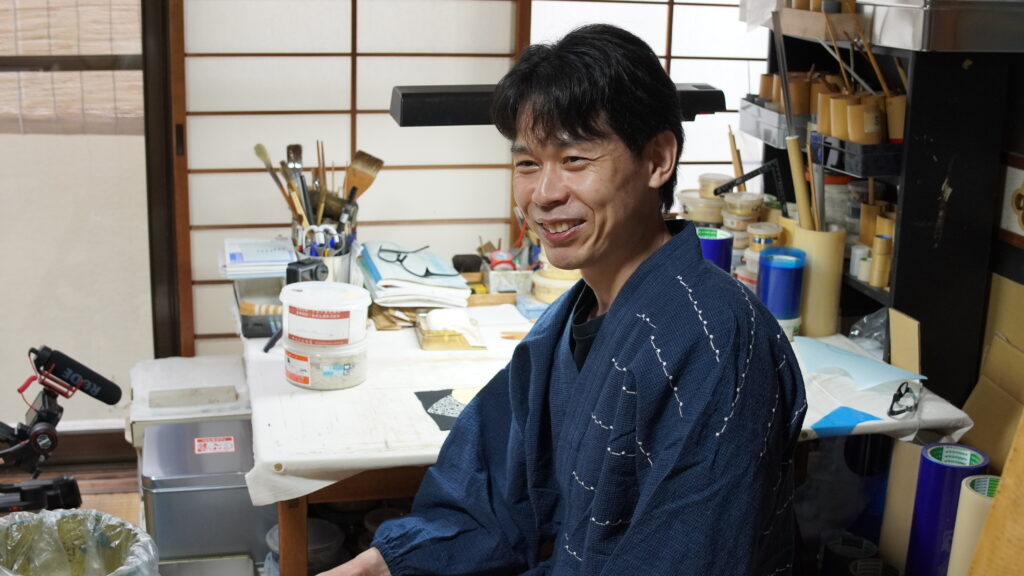
- —What made you decide to pursue a career in crafts?
-
I decided to pursue a career in the craft when I was a sophomore in my high school and quit my table tennis club. I started playing table tennis at the age of 14, but I knew that people who had started at the age of 2 or 3 were competing in national tournaments or the Olympics. I realized the difference in the ability when I joined the strongest club team in Kyoto after entering my high school. I thought that ” Your table tennis career can be determined depends on when you start playing.” I was looking for something to do during the summer vacation after quitting table tennis and my father approached me and asked me to take a step into the craft industry. I don’t know if my father expected this would happen, but he had already decided where I was going to train (laughs).
- —So, did you join the family business when you graduated from high school?
-
No. Before I entered the family business, I was trained at the workshop of Kotaro Motohashi, a leading kinsai (gold leaf) craftsman. After I joined the workshop, I was told that it was one of the three toughest workshops to be trained in Kyoto (laugh). However, there was a lot of work compared to now. Every day, a large number of requests were brought in with cardboard boxes. I was exposed to a lot of new glues, foils and new techniques that I had never seen at my family business. To be honest, I was thinking to quit many times, but my father was in the same business as me, and I knew I couldn’t bring disgrace to his face, so I was being patient.
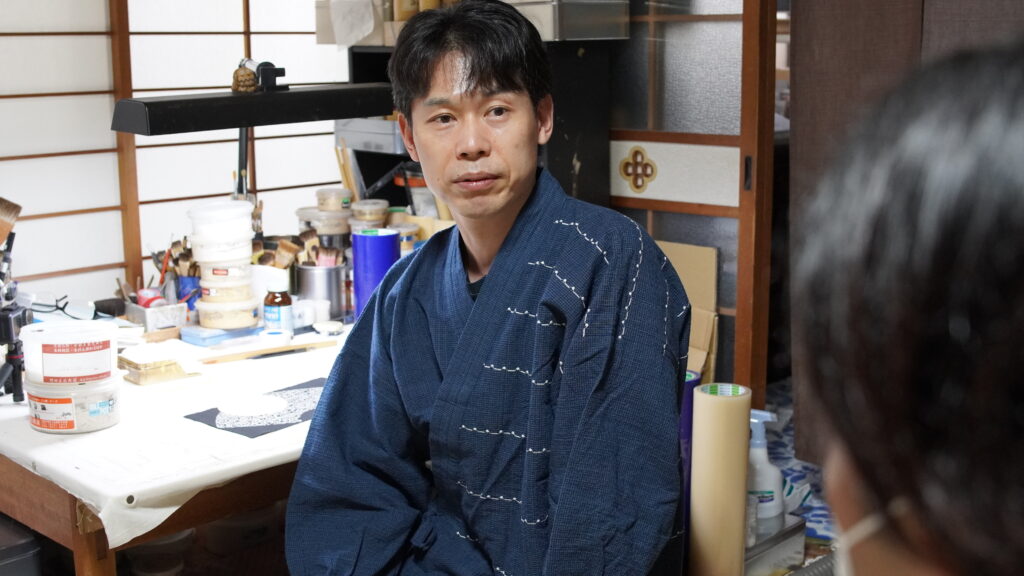
- —Was there anything that you cared about during your training?
-
At first, I was obsessed with learning the techniques. When it had been four years since my first training, I thought I would like to make original products outside of my main business. I thought that the craft and kimono industry would decline in the future, and it made me think that I should start creating something new. Nowadays, I think it is normal among craftspeople to develop their original products, which is not their main line of work. But at that time, no one was doing that. I was repeatedly told by other craftsman, “Why do you need to do that?” and “Concentrate on the job you have now.”
- —After you finished your training, did you immediately return to your parents’ home to work with your father?
-
Yes, but there was no work at all at that time. It wasn’t like I was getting work through goodwill. So, I started to get some work little by little as my father could introduce me a few of his acquittance who I can work with. Moreover, I kept trying to develop new products such as bag and wallet and sell them whilst doing my main work. After this, I registered a trademark for my brand called “Wokashi”. Additionally, I started to make gilded glass plates with my brother’s introduction, and this brought me a few opportunities to be asked to develop new products by companies that were interested in my work. At that time, only a few persons were making anything except for kimonos, so I think I was a kind of pioneer in this field.

- —When I first saw the gilded glass plates, I still had the stereotype that Kyo Yuzen = Kimono, so I was surprised when I heard that Kyo Yuzen technique was used for the plates!
-
I still believe that such information is meaningless unless many people know about it. That is why I have been writing a blog for about 8 years now and continue to share information regularly. Recently, I also started my Instagram page!
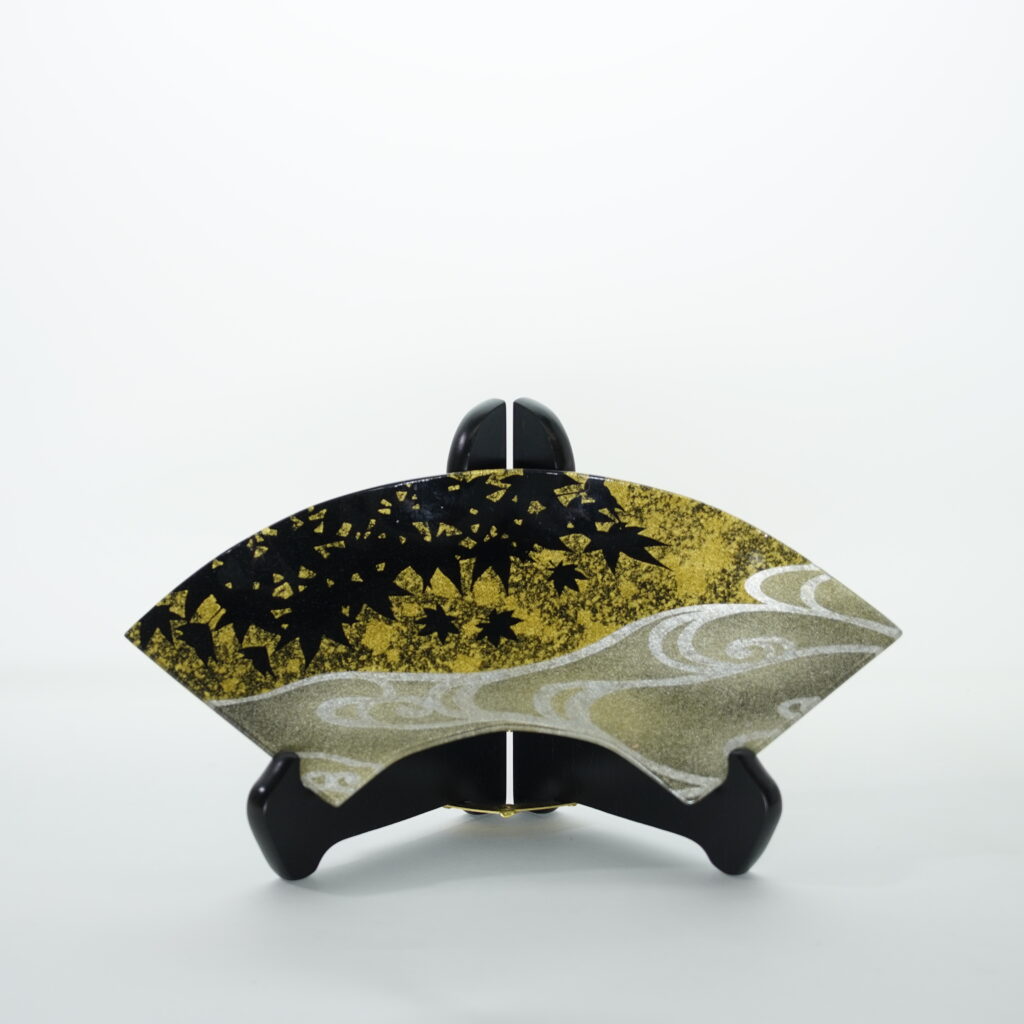
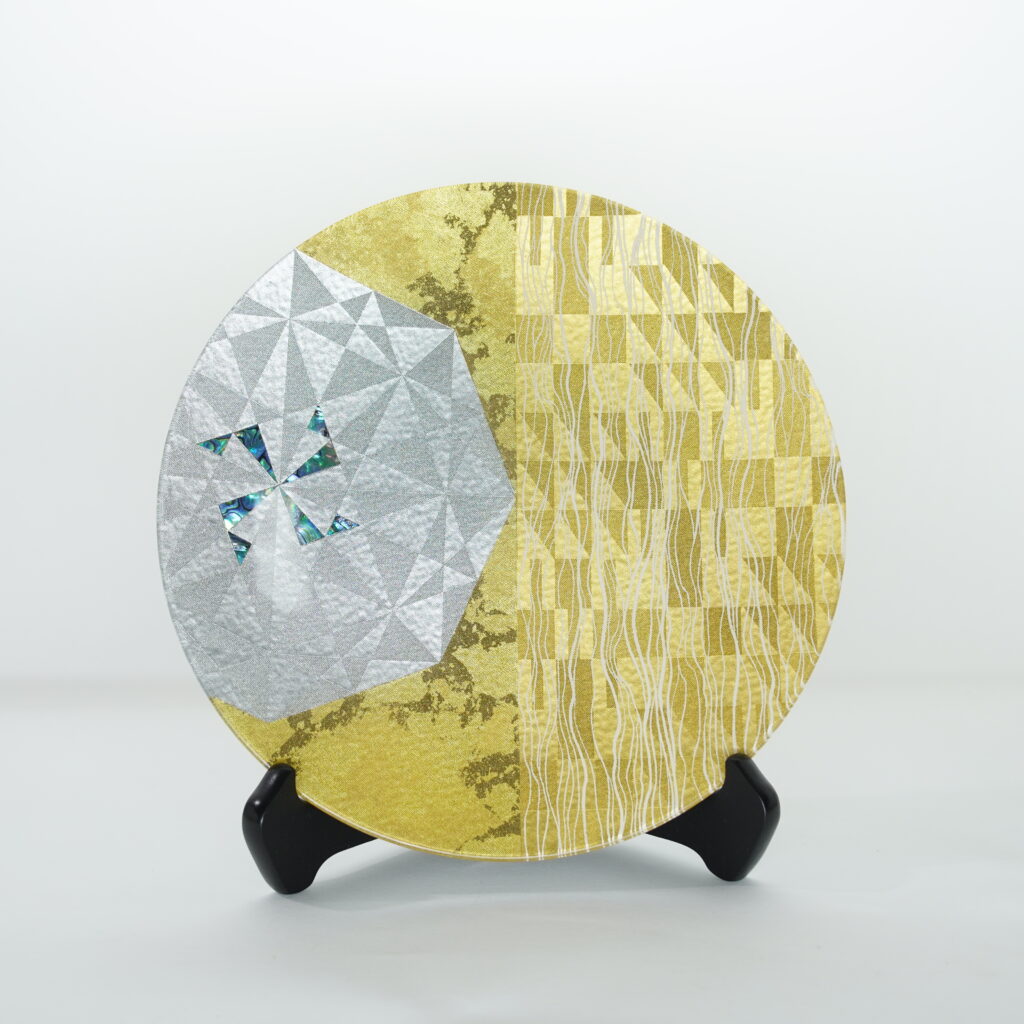
- —I have spoken with many craftspeople before, and I often see people who are not familiar with digital technology since the industry is supported by older generations. Was there anything that makes you want to share your information on social media?
-
I felt it was essential to share information at the time when one of our clients in Tokyo went out of business. There were four stores in Tokyo that carried Huduru Kohgei products, and as soon as they went out of business, I realized how important those four stores had been for us, and I started to think that we have to share our business activity. With modern social networking sites, most of the information cannot be stacked in people’s head after 24 hours. From this, I am focusing on writing unique information and have been doing this for 8 years now. Also, for my YouTube channel, I sometimes run out of my idea, so whenever I come up with a new idea, I try to write it down!
- —Is there anyone you admire?
-
My father, Kotaro Motohashi, can definitely be the one but also another person who has influenced me is Mr. Mitsumasa Wada. Mr. Wada is a legend who has developed the modern Kyo Yuzen! He developed all the tools, glues and materials used in overglaze gold crafts. I believe that overglaze gold crafts does not exsist today without Mr. Wada and other overglaze gold craftsmen. For example, starch resin used to be the main material, but he identified the fact that cockroaches would eat it and the texture of the crafts get harder. From this, Mr Wada developed a synthetic resin that can overcome those difficulties. Also, he used gold leaf to produce the soft blurring of yuzen, and I also think he has an outstanding sense of color scheme. It was also Mr. Wada who made the term kinsai yuzen, which is now in common use. I see him occasionally at meetings, and I can’t stop showing my respect to him.
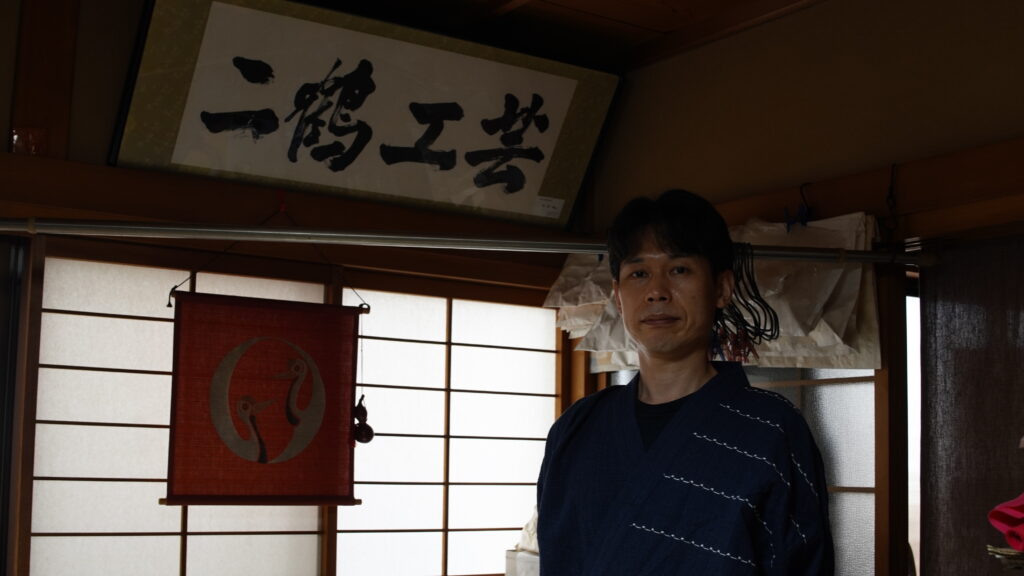
- —Finally, what would you like to say to the young people who are entering the craft industry?
-
I think it is important to be prepared for anything. Of course, money is important. To enter this industry, you will need various things such as a workshop, tools, etc., and as for materials, you may have to pay some expenses every month. Therefore, I think that some preparation is necessary before becoming a craftsman. And the rest is your determination. In the past, there was more work than today, as you could be assigned a client or be introduced to an inquiry. Nowadays, for better or worse, you must get your own work. I suppose it’s the same in any industry, but we are in the industry that could go under at any time, so if you do your homework and well prepared, I think your career will turn out to be amazing!!!
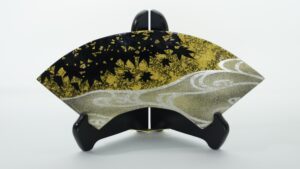
Suigenkyo Online Store
We offer a wide range of products including tableware, accessories, and interior design.
Suigenkyo YouTube
You can see the making process of the products listed on Suigenkyo Online Store.
